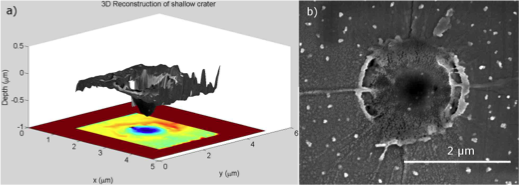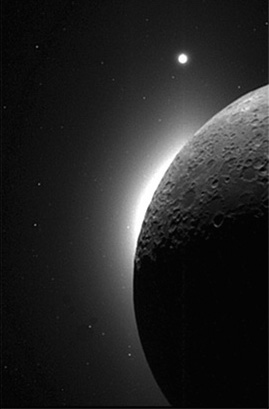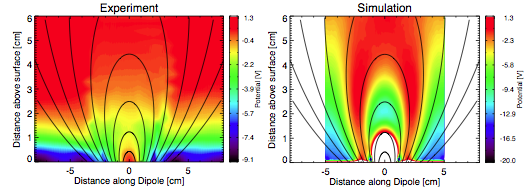

The Institute for Modeling Plasma, Atmospheres, and Cosmic Dust (IMPACT) is a member of the Solar System Exploration Research Virtual Institute (SSERVI). With partners from the University of Colorado Boulder (CU Boulder) departments of physics and aerospace engineering sciences, the Laboratory for Atmospheric and Space Physics (LASP), the Colorado School of Mines, and an array of international collaborators, IMPACT studies the dusty plasma environments around airless bodies within the interplanetary medium.
Through a combination of modeling, theoretical and laboratory experiments, IMPACT researchers will answer a variety of science questions as well as provide insight necessary for ensuring human safety and long-term usability of mechanical and optical devices on airless bodies.
Formerly known as the Colorado Center for Lunar Dust and Atmospheric Studies (CCLDAS), IMPACT is committed to a coherent and integrated plan for research, teaching, and community development. Experimental and theoretical efforts will explore the role that hypervelocity dust impacts have on shaping the surface and near-surface environments of airless bodies as well as techniques to mitigate hazardous dust interactions.
IMPACT is an interdisciplinary program investigating the physical processes governing dusty plasmas including issues necessary for ensuring human safety and long-term usability of mechanical and optical devices on airless bodies.
Interplanetary dust, solar wind plasma, and ultraviolet (UV) radiation interact with all airless bodies within the solar system. These processes play critical roles in shaping the surface and near-surface properties of airless bodies including: surface charging, space weathering, dust transport, production of ejecta, and the existence of dilute exospheres.
The hazards due to dust impacts and energetic solar wind plasma particles need to be recognized and mitigated to safeguard the journey of human and robotic missions in interplanetary space. Understanding the physical properties of the surfaces of target bodies and developing abilities for In-Situ Resource Utilization (ISRU) prospecting and exploitation are critical to sustaining our presence at any of our possible destinations.
IMPACT will conduct a series of interconnected experiments, which together advance a comprehensive understanding of impact-related phenomena. Areas explored include the measurement of particulate, gaseous and charged ejecta products from micrometeoroid impacts, including those onto icy targets. Utilizing both the Dust Accelerator Laboratory (DAL) and the light gas gun housed at the Johnson Space Center, IMPACT will be able to study a wide range of impact properties. Impactor parameters mimic interstellar dust and include: velocities that range from 1-100km/s and diameters that range from 0.2µm - 5mm. Impactor targets include: solid regolith simulants, icy bodies, and gaseous targets designed to appropriately model the surfaces of airless bodies such as the moon or asteroids.

During the Apollo era, astronauts saw "horizon glow" and "streamers" in the moon's outmost atmosphere, or "exosphere." Since then many scientists have suggested that these phenomena were caused by sunlight scattered by dust grains in the exosphere. Questions about how lunar dust and dusty plasmas are charged, mobilized and transported remain at the center of dusty plasma studies.
IMPACT is developing a series of laboratory experiments, supplemented by state-of-the-art theory and modeling, to study:
The results of these experiments will provide answers to open questions about the surface and near surface environments of airless bodies and physical insights to mission planners.

In February 2011 the newly developed accelerator housed by IMPACT, formerly the Colorado Center for Lunar Dust and Atmospheric Studies (CCLDAS), produced its first successful dust impact. Since then, IMPACT has been working to improve the accelerators performance as well as the ability to actively select dust particles to provide a specific set of impactor parameters (ie. velocity, mass, and charge).
Highly charged dust particles of various mass are accelerated by the large potential difference created by the pelletron and sent flying through the beamline. The beamline consists of various units that provide particle focusing and selection. Once entering the beamline, dust particles pass through an electrostatic focusing lens and steering unit. The particles then pass through a set of pick-up sensors that determine the mass, charge, and velocity of particles. Particles that do not lie in the desired mass and velocity range are deflected via a selection unit, allowing a selective set of impactors to reach the target. A final detector and the end of the beamline confirm the arrival of the particles.
Aside from the accelerator, IMPACT has broadened the available targets to better represent micrometeoroid impacts on airless bodies. Improvements in target chambers include better temperature control allowing a range of -200°C to 100 °C and the ability to use icy and gaseous targets. With the available targets, DAL will provide experimental support to provide answers to scientific questions regarding dust impacts on both airless bodies and spacecraft as well as provide calibration for instruments such as LDEX
Theoretical studies support the many experimental efforts at IMPACT and provide interpretations of physical measurements made in the lab. The theoretical work undertaken at IMPACT is as vast as the experimental efforts and includes studies of:
